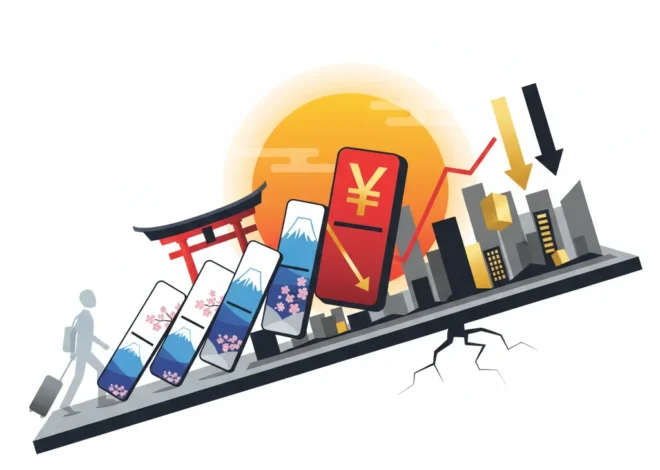
From Flowers to Fabs: Japan’s High-Stakes Bet to Reclaim its Global Tech Crown
In the rolling hills of Kyushu, an island once celebrated more for its vibrant flower festivals and agricultural bounty, a different kind of seed is being planted. This is not a seed of flora, but of silicon. Japan, a nation that once stood as the undisputed titan of the global semiconductor and electronics industry, is staging a monumental comeback. With tens of billions of dollars in government backing and strategic global partnerships, the country is making a high-stakes gamble to transform this southern island into a pivotal hub for the world’s most critical technology: semiconductors. This is more than just an industrial policy; it’s a profound strategic shift with deep implications for the global economy, international relations, and the future of investing.
The Ghost of Dominance Past: A Brief History of Japan’s Chip Leadership
For those in the world of finance and technology, it’s hard to forget the 1980s. This was an era when “Made in Japan” was synonymous with cutting-edge innovation. Japanese companies like NEC, Toshiba, and Hitachi didn’t just participate in the semiconductor market; they dominated it, controlling over 50% of the global market share at their peak. From the Sony Walkman to the Nintendo Entertainment System, Japanese ingenuity, powered by Japanese chips, defined a generation of consumer electronics.
However, the subsequent decades saw a dramatic reversal of fortune. A combination of factors, including intense trade friction with the United States, fierce price competition from South Korean giants like Samsung, and a failure to adapt to the “fabless” business model pioneered in the West, led to a steady decline. The country that once led the world in this foundational technology found itself falling behind Taiwan, South Korea, and a rising China. The epicenter of advanced chip manufacturing shifted, concentrating heavily in Taiwan, home to the indispensable Taiwan Semiconductor Manufacturing Company (TSMC).
The Geopolitical Catalyst: Why Now?
The world was jolted awake to the fragility of this concentration during the COVID-19 pandemic. Supply chain disruptions led to a crippling global chip shortage, halting production lines for everything from cars to smartphones. This wasn’t just an economic inconvenience; it was a stark warning about national security. It became painfully clear that reliance on a handful of locations for the “digital oil” of the 21st century was a critical vulnerability. Add to this the escalating geopolitical tensions surrounding Taiwan, and the need for supply chain diversification became an urgent global imperative.
For Japan, this global crisis presented a golden opportunity. The government, recognizing the link between semiconductor sovereignty and economic security, launched an audacious industrial strategy. The goal is not merely to reclaim past glory but to strategically position Japan as a stable, reliable, and technologically advanced partner for the United States and Europe. It’s a move to de-risk the global supply chain while simultaneously revitalizing its own high-tech industrial base.
Green Tape or Green Gold? Deconstructing the Economic Clash Between UK Housing and Nature
Kyushu’s Silicon Island: Deconstructing Japan’s Multi-Billion Dollar Strategy
At the heart of this national project is Kyushu. The Japanese government is pouring an estimated ¥10 trillion ($67 billion) into this initiative, using massive subsidies to attract global leaders and nurture a domestic champion. The strategy is two-pronged: secure the present by attracting established leaders and build the future by investing in next-generation technology.
The most significant validation of this strategy is the arrival of TSMC. The Taiwanese giant, lured by hefty subsidies covering up to half of its investment costs, has established its first Japanese factory in Kumamoto, Kyushu. This facility will focus on producing mature-node chips, crucial for the automotive and electronics industries, shoring up a critical segment of the supply chain (source). A second, more advanced fab is already in the works.
Simultaneously, Japan is betting on a homegrown hero: Rapidus. This consortium, backed by major Japanese tech firms like Toyota, Sony, and NTT, has the ambitious goal of mass-producing cutting-edge 2-nanometer chips by 2027. This would place Japan at the absolute forefront of semiconductor technology, a feat it hasn’t achieved in decades. The table below outlines the key players and their roles in this ambitious national project.
| Company / Initiative | Key Focus | Strategic Importance | Notable Investment / Support |
|---|---|---|---|
| TSMC (Kumamoto) | Mature & Advanced Node Foundry Services | Securing current supply chains for auto/electronics; knowledge transfer. | Over $8.6 billion for the first fab, with significant government subsidies. |
| Rapidus | Cutting-Edge 2nm Logic Chips | Re-establishing Japanese leadership in next-generation technology. | Backed by a consortium of 8 major Japanese companies and over $2 billion in government funding. |
| Kioxia / Western Digital | NAND Flash Memory | Maintaining Japan’s strength in the critical data storage market. | Joint ventures receiving subsidies for expanding production in Mie and Iwate prefectures. |
| Micron Technology | DRAM Memory Chips | Strengthening the memory chip supply chain within an allied nation. | Investing up to $3.7 billion in Hiroshima with Japanese government support. |
The Ripple Effect: Broader Economic and Financial Implications
The impact of this semiconductor revival extends far beyond the factory gates. A successful execution promises a significant boost to Japan’s economy, potentially adding percentage points to its GDP growth, creating tens of thousands of high-skilled jobs, and revitalizing regions that have seen decades of stagnation.
For those involved in investing, the opportunities are manifold. The most obvious plays are the chipmakers themselves, but the real value may lie in the vast ecosystem that supports them. Japanese companies are world leaders in producing specialized chemical materials, manufacturing equipment, and silicon wafers—all indispensable components of the semiconductor supply chain. Firms like Tokyo Electron, Shin-Etsu Chemical, and Lasertec are poised to benefit immensely from this domestic super-cycle. This creates a compelling narrative for investors looking at the Japanese stock market with fresh eyes.
Furthermore, a robust domestic semiconductor industry is the bedrock for future innovation. The immense computational power required by modern financial technology (fintech), secure blockchain applications, and high-frequency trading algorithms all depend on advanced chips. A secure, onshore supply of these components is a strategic asset for a nation’s digital infrastructure, strengthening everything from its core banking systems to its national security apparatus. By securing the hardware layer, Japan is future-proofing its entire digital economy.
The Verdict: A Necessary Gamble
Is Japan’s semiconductor strategy a gamble? Absolutely. The challenges are immense. The country faces a significant shortage of skilled engineers, and the cost of building and operating advanced fabrication plants is astronomical (source). The race for technological supremacy is relentless, and there is no guarantee of success for latecomers, even with massive government support.
However, in today’s world, the cost of inaction may be far greater. This is a calculated risk, driven by the inescapable logic of economics and geopolitics. By leveraging its historic strengths in precision manufacturing and material science, and by forging strategic alliances, Japan is not just trying to rebuild an industry. It is reasserting itself as a critical, indispensable node in the global technology landscape. The island of flowers is transforming, and the world of technology, finance, and geopolitics will be watching to see if silicon blooms once more in the Land of the Rising Sun.


